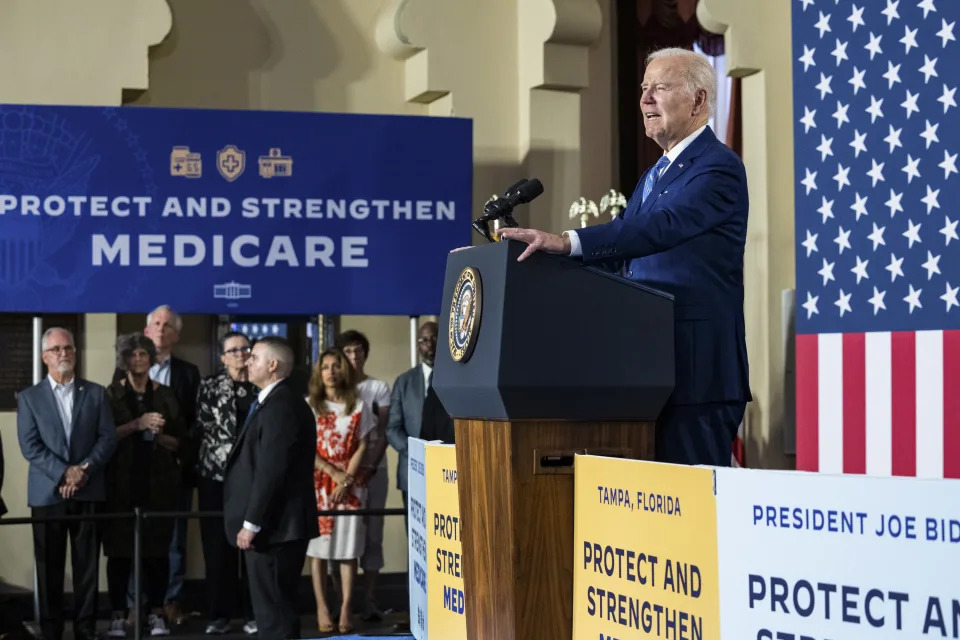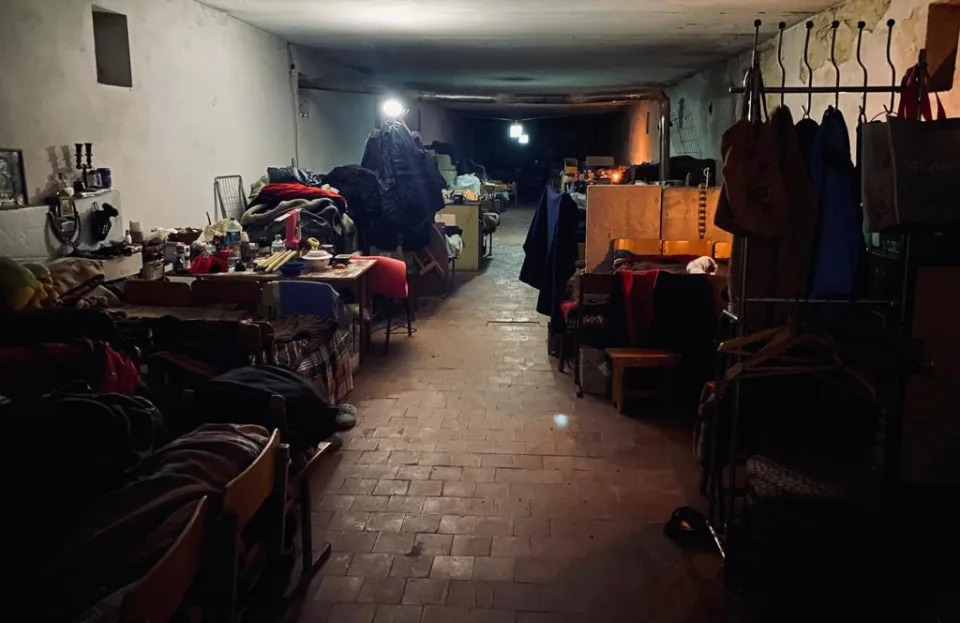The New York Times
More Retiree Health Plans Move Away From Traditional Medicare
Mark Miller – March 11, 2023

Bob Bentkowski, a retired New York City firefighter, has a rare, painful disease that caused his kidneys to swell almost to the size of basketballs. He needed a transplant, and in the fall of 2021, he found a donor after waiting for years — but he was unsure whether Medicare would cover his surgery.
New York City has long provided its retired employees with comprehensive health benefits that pay for most of their Medicare costs. But with his transplant approaching, the city, and a coalition of its labor unions, had thrown Bentkowski a curveball. Aiming to save $600 million annually, they were negotiating to shift 250,000 retirees out of traditional fee-for-service Medicare into a privately operated Medicare Advantage plan.
“I was panicking about what might happen if I moved over to this new plan, since I was only a month away from the surgery,” Bentkowski said. But after hours on the phone with the insurance company, he was told that it couldn’t give him an answer until he enrolled. “They just give you the runaround. How am I going to join the plan when I don’t know what it will cover?”
Ultimately, Bentkowski’s surgery was covered under traditional Medicare. The city’s plans for Medicare Advantage became bogged down in litigation and political battles, with the opposition led by a group of New York City retirees who organized to fight not only the city but their own unions. Their battle has continued into this year, with a group representing city workers voting Thursday to approve the latest Advantage proposal.
The fight in New York City is a highly visible example of a nationwide shift in the way some retirees receive health insurance benefits from former employers, both in the public and private sector. It pits the drive to control health care costs against retired workers’ pocketbook and health concerns.
Many employers have dropped these benefits over the past several decades, and those that still offer them are shifting retirees into Medicare Advantage plans at a rapid pace.
Half of large employers offering benefits to Medicare-age retirees have contracts with Medicare Advantage plans, nearly double the share in 2017, according to the Kaiser Family Foundation. And roughly 44% don’t give retirees a choice to use traditional Medicare within their programs. Most cited lower cost as the key reason.
The growth is part of a bigger story about Medicare Advantage expansion. Advantage is an alternative to traditional Medicare offered by insurance companies, and it uses managed-care techniques to control costs. Nearly half of Medicare beneficiaries were enrolled in Advantage plans last year, more than double the rate in 2007. And enrollment is projected to cross the 50% threshold as soon as this year, according to the foundation.
Retirees who are shifted into Medicare Advantage plans may not fully understand the major differences from traditional Medicare. These include the requirement to use physicians and hospitals in their plan’s narrower network, and reduced access to care in some instances. A federal investigation concluded last year that tens of thousands of people in Medicare Advantage plans were denied necessary care that should be covered.
The shift will also mean higher costs for taxpayers and all Medicare beneficiaries, some experts say. Payments by the federal government to Advantage plans average 102% of its spending on the fee-for-service traditional program, and that contributes to higher overall Medicare spending. This occurs in part because a bonus system awards extra dollars to plans that achieve high quality ratings from Medicare.
Advantage plans have also been found to submit to Medicare inflated bills that over-diagnose their patients. According to federal audits, the practice of “upcoding” crossed the line into fraud. Excess payments totaled $12 billion in 2020, according to the independent Medicare Payment Advisory Commission, which advises Congress.
The higher costs add financial pressure to Medicare’s hospital insurance (Part A) trust fund, as well as the taxpayers, beneficiaries and state-run Medicaid programs that fund the Part B program. The Part A trust fund is forecast to run dry in 2028, leaving revenue sufficient to meet 90% of the program’s obligations.
“On the one hand, Medicare Advantage allows employers to continue to offer retiree health benefits and potentially broaden benefits, and may lower their financial liability for retiree health,” said Tricia Neuman, senior vice president of the Kaiser Family Foundation. “It also has the possibility of increasing Medicare spending.”
Insurers argue that Medicare Advantage group plans are simply one choice available to retirees. “Medicare rules require that retirees always have the option to opt out of enrollment in a group Medicare Advantage plan in favor of other forms of coverage that may be available,” said Heather Soule, a spokesperson for UnitedHealthcare, one of the largest providers of Advantage plans.
But for many retirees, joining an Advantage plan can be a difficult decision to reverse. Traditional Medicare should be paired with supplemental coverage — often a Medigap policy — to protect against potentially high out-of-pocket costs. But the best time to buy a Medigap policy is during the six months after you sign up for Part B (outpatient services), when insurers cannot reject you, or charge a higher premium, because of preexisting conditions. After that time, you can be rejected or charged more in most states.
What’s more, when employers make this transition, retirees often face a choice: Join an Advantage plan or lose the benefit.
“It really takes away choice,” said Marilyn Moon, an economist and a former trustee of both Social Security and Medicare. “The whole idea of Medicare Advantage was supposed to be to give people more choice, not less.”
Seeking Cost Savings
Medicare Advantage offers employers an opportunity to reduce costs substantially. They and unions traditionally have provided a retiree health benefit that fills the gaps in traditional Medicare by paying for deductibles and co-pays, and by providing other benefits. When an employer contracts with a Medicare Advantage insurer, retirees get all of their benefits, including their Medicare-covered benefits, from this Medicare Advantage plan.
In New York City, labor unions representing retirees have been working with the city on its planned shift to Advantage. They promoted the projected savings and their ability to use their bargaining clout to negotiate for far more generous features than those in plans available for individual purchase.
“When we looked at this, we saw that we could design our own plan that would get the same benefits and even more for our retirees,” said Michael Mulgrew, president of the United Federation of Teachers, the city teachers union. “One of our greatest assets is the ability to use our buying power to get that done and, more importantly, to set up an accountability system and a contract where we’re holding the provider to every single word in our contract.”
As the plan was originally envisioned in 2018, retirees who wanted to stay on traditional Medicare could do so if they paid an estimated $191 per month to cover its higher cost to the city. But a grassroots group founded in 2021, the NYC Organization of Public Service Retirees, sued over the plan, taking its battle to the City Council and organizing through Facebook, YouTube and email.
On Thursday, the Municipal Labor Committee, which represents the city’s 102 unions, approved the latest plan to offer only Medicare Advantage starting in September.
In a statement Thursday, Mayor Eric Adams said the new arrangement “improves upon retirees’ current plans,” and includes a lower deductible, a cap on out-of-pocket expenses, and new benefits. “We also heard the concerns of retirees and worked to significantly limit the number of procedures subject to prior authorization under this plan,” Adams said. “This Medicare Advantage Plan is in the best interests of retirees and taxpayers.”
The retiree group says it is considering its next steps, possibly including new litigation. “Labor should never support privatizing public health care or stripping retirees of vested earned benefits,” the group’s founder, Marianne Pizzitola, a retired city Fire Department emergency medical services employee, said in a statement.
“This is a daily anxiety the city and the Municipal Labor Committee are putting us through,” she added in an interview.
Bentkowski felt that anxiety in 2021 as he tried to learn whether an Advantage plan would cover his kidney transplant. He was among the first firefighters to respond at the World Trade Center on Sept. 11, 2001, and a lung-related disability that developed afterward forced him to retire at age 45. He qualifies for Medicare now, at 53, because he receives Social Security Disability Insurance.
“The Medicare Advantage plan might be good for some people,” Bentkowski said. “But you just can’t squeeze everyone into one plan and say it’s going to work.”
The protection of labor agreements and the municipal code has given opponents of the New York City plan leverage to fight the Medicare Advantage transition. In the corporate sector, retiree benefits are offered at employers’ discretion — but that hasn’t stopped some retirees from trying to fight these transitions.
IBM introduced two new Medicare Advantage plans this year for its large retired workforce, replacing a plan that paid for supplemental Medigap coverage along with prescription drugs, dental and vision.
IBM retirees were given the option to stick with the old benefit — but they would lose access to balances in their health reimbursement arrangements, an employer-funded plan that reimburses certain medical expenses and insurance premiums. In most cases, employers retain the right to change this type of benefit, says Trevis Parson, chief actuary for individual marketplace business at the benefits consulting firm Willis Towers Watson.
“Most plan sponsors include language in their plan documents explicitly reserving rights to amend the plan,” he said. Some retirees were outraged by that tactic, and by the announcement of the planned transition with relatively short notice in September.
“They sprung it on us — either take Medicare Advantage or forfeit your balance,” said Steve Bergeron, who retired from IBM in 2009 after 29 years.
In a statement, IBM said that for 2023, two Medicare Advantage PPO options have “enhanced design elements above and beyond what participants were previously able to obtain with individual policies.”
Like many group plans, the new IBM offering features copays and annual deductibles much lower than those found in individual plans, and wider networks of providers. But it’s not clear how long those features will remain.
“There’s no guarantee of anything from IBM,” Bergeron said. “What if these terms were just to get people to sign up?”
Neuman of Kaiser Family Foundation shares that concern. “The question is, what happens over the longer term for retirees, perhaps five or 10 years from now, when the circumstances may change and it may be more difficult to maintain the favorable terms of a negotiated contract?” she asked.
Bergeron has been organizing retirees on social media to fight the change and with an online petition calling on IBM to drop the plan. He has also tried to recruit lawyers to sue the company, but most have advised that the case is not strong, since the retiree benefit is discretionary.
After holding out against the change, Bergeron reluctantly joined one of the Advantage plans, not wanting to forfeit the $27,000 balance in his health reimbursement arrangement.
“I never dreamed I would join, but I did,” he said. “I waited until the last minute, and signed up on the last day that I could. I really was fighting it in my brain.”

















